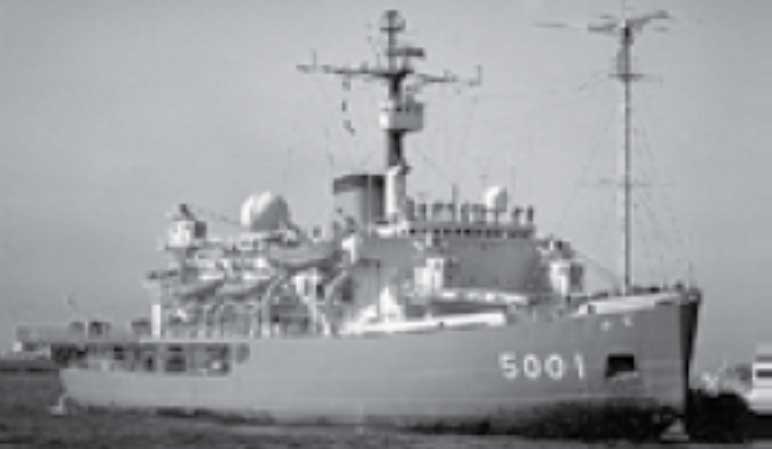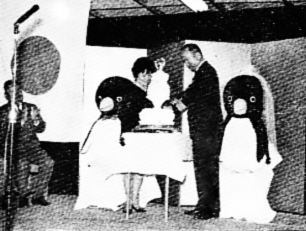Stories
Episode2. Driving Antarctic research forward.
Episode2.
Driving Antarctic research forward.

The Japanese Antarctic Research Expedition started in 1957. It’s hard to overstate the significance of such a national project for Japan at that time, as the country was recovering from its defeat in WWII and aiming to rejoin the international community. Japan's first full-scale arctic icebreaker, the Fuji, was constructed for the seventh observation mission, and it was outfitted with an electric propulsion system by Fuji Electric.
The previous observation ship, the Soya, had a screw that was moved directly by a turbine or a diesel engine, but it was difficult to steer because of the strong pressure from the ice. The electric propulsion system rotates the generator, driving the motor with the electric power it generates, and moves the screw to break the thick Antarctic ice powerfully and quickly, achieving smooth steering.
So what does icebreaking work involve? First, in approaches two to three times the length of the ship, the icebreaker plunges forward and crashes into ice that is sometimes more than one meter thick. Then, the ship pulls back and plunges forward again, and this is repeated over and over. For this reason, propulsion systems must be impact resistant, with a large rotational force so the ship can quickly speed up from low speed, and also the maneuverability to move forward and backward easily and quickly. Fuji Electric's electric propulsion system incorporates the most advanced technology and ideas of the era, and it has been carefully tested many times over, clearing high requirements such as a six-meter icebreaking capability. The system was adopted because it was evaluated as having global-level Class-A performance.
The Fuji set sail from Tokyo’s Harumi Wharf on November 20, 1965. It was assigned four roles in total; in addition to icebreaker, it also served as a transport ship, observation ship, and helicopter aircraft carrier. After it finished transporting the observation team's materials, the Fuji visited foreign bases, conducted field observation, and provided support for base operations, then returning on April 8, 1966. The electric propulsion system was the heart of the Fuji, allowing all processes to be carried out without a hitch.
Our electric propulsion systems now use lithium-ion batteries to make zero-emission vessels a reality. They protect the environment by reducing CO2 emissions, and they have also been delivered to the e-Oshima and other fully battery-powered, self-propelled vessels and are powerfully functioning.
Another project on the Fuji.

There was actually another project by Fuji Electric on board the icebreaker Fuji—or, more accurately, a pair of projects: two stuffed toy mascot penguins, a married couple named Akio and Kazue Fuji. Their origin story comes from something the ship’s captain let slip to one of our guarantee engineers: “You know how the Glacier, the American icebreaker, has mascots? It’d be nice if we did too.” The engineer started work on the mascot creation project right away—without any blueprints, of course. Employees with skills like dressmaking and painting came together to share their knowledge and abilities. They completed the project in about 10 days, sometimes working overnight. The penguin couple boarded the Fuji and proved to be quite popular both on the ship and at ports of call. Apparently so many people showed them affection that by the time they came home, their beaks were warped from all the rubbing.
